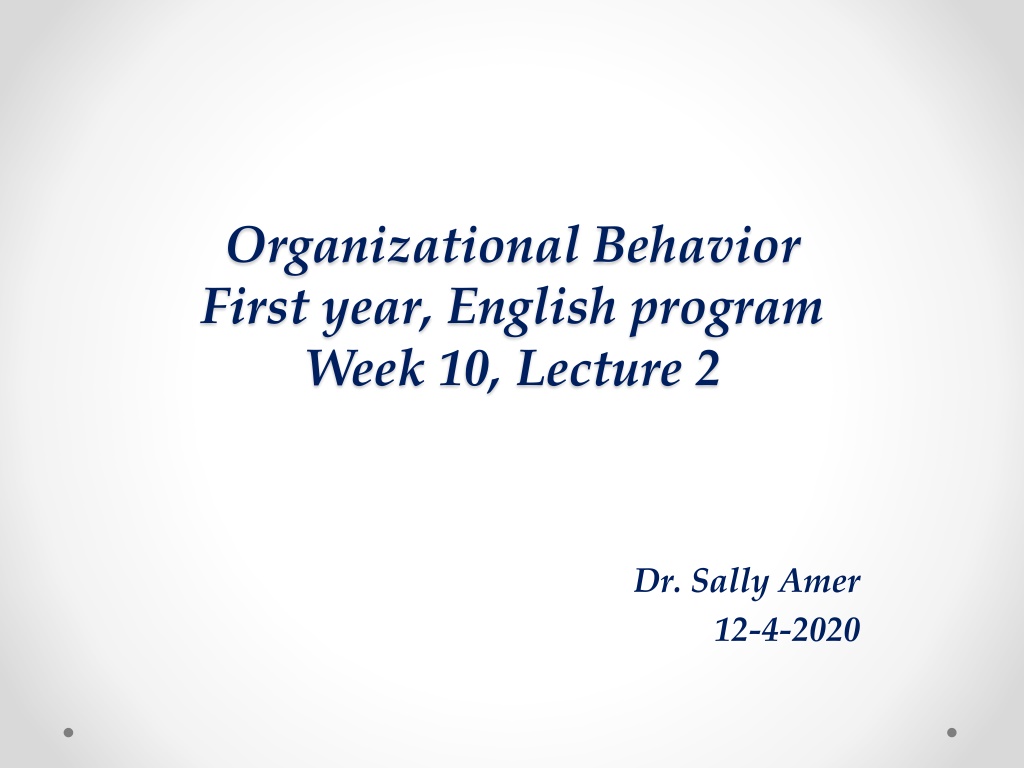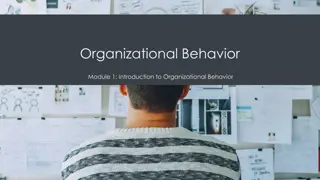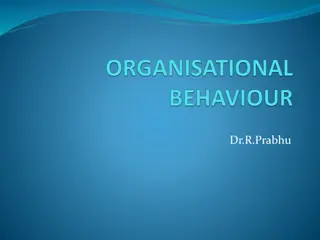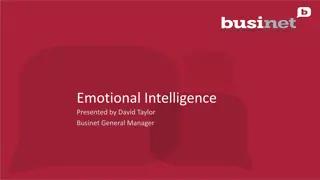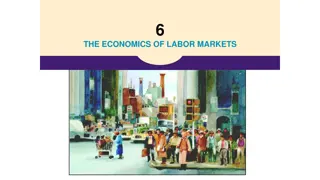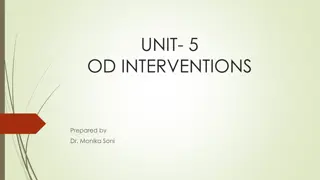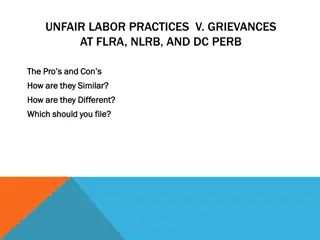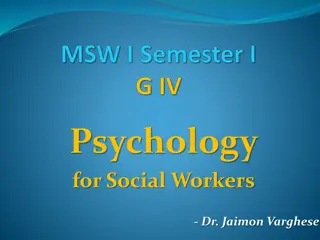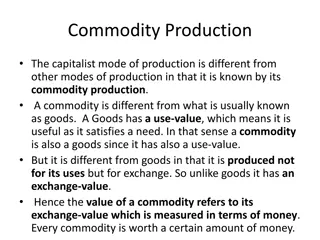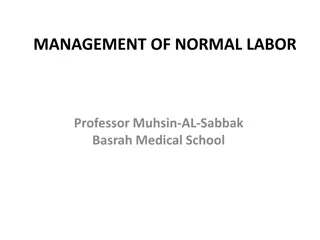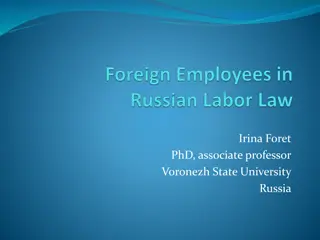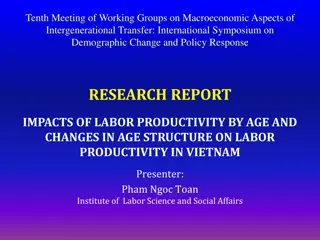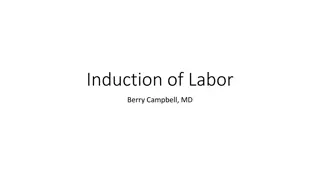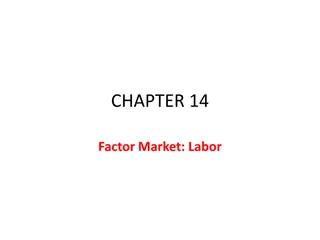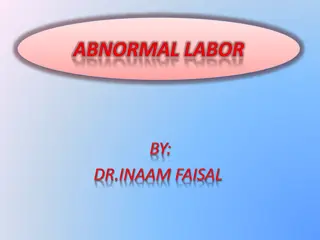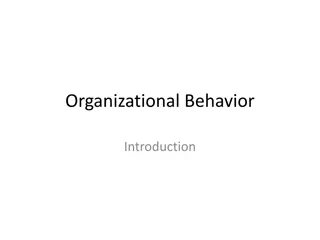Emotional Labor in Organizational Behavior
Emotional labor involves employees expressing organizationally desired emotions during work interactions, impacting job performance. Employees may face emotional dissonance when projecting one emotion while feeling another, leading to surface or deep acting. Affective Events Theory (AET) suggests that workplace events trigger emotional reactions influencing attitudes and behaviors. This lecture explores the importance of managing emotions at work.
Download Presentation

Please find below an Image/Link to download the presentation.
The content on the website is provided AS IS for your information and personal use only. It may not be sold, licensed, or shared on other websites without obtaining consent from the author.If you encounter any issues during the download, it is possible that the publisher has removed the file from their server.
You are allowed to download the files provided on this website for personal or commercial use, subject to the condition that they are used lawfully. All files are the property of their respective owners.
The content on the website is provided AS IS for your information and personal use only. It may not be sold, licensed, or shared on other websites without obtaining consent from the author.
E N D
Presentation Transcript
Organizational Behavior First year, English program Week 10, Lecture 2 Dr. Sally Amer 12-4-2020
Chapter 4 Emotions and Moods Part Two
Learning Objectives 1- Show the impact emotional labor has on employees. 2- Describe affective events theory and identify its applications. 3- OB Applications of Emotions and Moods. 4- How Managers Can Influence Moods.
Emotional Labor Every employee expends physical and mental labor by putting body and mind, respectively, into the job. But jobs also require emotional labor , an employee s expression of organizationally desired emotions during interpersonal transactions at work. The concept of emotional labor emerged from studies of service jobs. Airlines expect their flight attendants to be cheerful; we expect funeral directors to be sad and doctors emotionally neutral. But emotional labor is relevant to almost every job.
Emotional Labor The true challenge arises when employees have to project one emotion while feeling another. This disparity is emotional dissonance. It s from the increasing importance of emotional labor as a key component of effective job performance that we have come to understand the relevance of emotion within the field of OB. It can help you, on the job especially, if you separate emotions into felt or displayed emotions . Felt emotions are an individual s actual emotions. In contrast, displayed emotions are those that the organization requires workers to show and considers appropriate in a given job.
Emotional Labor (Cont.) Displaying fake emotions requires us to suppress real ones. Surface acting is hiding inner feelings and forgoing emotional expressions in response to display rules. A worker who smiles at a customer even when he doesn t feel like it is surface acting. Deep acting is trying to modify our true inner feelings based on display rules. A health care provider trying to genuinely feel more empathy for her patients is deep acting. Surface acting deals with displayed emotions, and deep acting deals with felt emotions. Research shows that surface acting is more stressful to employees because it entails denying their true emotions.
Affective Events Theory (AET) Affective events theory (AET): A model that suggests that workplace events cause emotional reactions on the part of employees, which then influence workplace attitudes and behaviors. AET offers two important messages. First, emotions provide valuable insights into how workplace hassles and uplifting events influence employee performance and satisfaction. Second, employees and managers shouldn t ignore emotions or the events that cause them, even when they appear minor, because they accumulate.
Affective Events Theory (AET) (Cont.) - The theory begins by recognizing that emotions are a response to an event in the work environment. The work environment includes everything surrounding the job the variety of tasks and degree of autonomy, job demands, and requirements for expressing emotional labor. - This environment creates work events that can be hassles, uplifting events, or both. - These work events trigger positive or negative emotional reactions, to which employees personalities and moods lead to respond with greater or lesser intensity.
Affective Events Theory (AET) (Cont.) - People who score low on emotional stability are more likely to react strongly to negative events. - Our emotional response to a given event can change depending on mood. - Finally, emotions influence a number of performance and satisfaction variables, such as organizational citizenship behavior, organizational commitment, level of effort, intention to quit, and workplace deviance.
Affective Events Theory (Cont.) Tests of affective events theory suggest the following: 1. An emotional episode is actually a series of emotional experiences, precipitated by a single event and containing elements of both emotions and mood cycles. 2. Current emotions influence job satisfaction at any given time, along with the history of emotions surrounding the event. 3. Because moods and emotions fluctuate over time, their effect on performance also fluctuates. 4. Emotion-driven behaviors are typically short in duration and of high variability. 5. Because emotions, even positive ones, tend to be incompatible with behaviors required to do a job, they typically have a negative influence on job performance.
Emotional Intelligence Emotional intelligence (EI) is a person s ability to (1) perceive emotions in the self and others, (2) understand the meaning of these emotions, and (3) regulate one s emotions accordingly in a cascading model. People who know their own emotions and are good at reading emotional cues for instance, knowing why they re angry and how to express themselves without violating norms are most likely to be effective.
Emotional Intelligence (EI) (Cont.) Emotional intelligence (EI) is the ability to detect and to manage emotional cues and information.
OB Applications of Emotions and Moods Emotions and moods can improve our ability to explain and predict the selection process in organizations, decision making, creativity, motivation, leadership, interpersonal customer service, job workplace behaviors. 1) Selection One implication from the evidence on EI to date is that employers should consider it a factor in hiring employees, especially in jobs that demand a high degree of social interaction. More employers are starting to use EI measures to hire people. conflict, attitudes, negotiation, and deviant
OB Applications of Emotions and Moods (Cont.) 2) Decision Making: OB researchers are increasingly finding that moods and emotions have important effects on decision making. Positive moods and emotions seem to help. People in good moods or experiencing positive emotions are more likely than others to use heuristics, or rules of thumb, to help make good decisions quickly. Positive emotions also enhance problem-solving skills, so positive people find better solutions to problems. While, depressed people are slower at processing information and tend to weigh all possible options rather than the most likely ones. They search for the perfect solution, when there rarely is one.
OB Applications of Emotions and Moods (Cont.) 3) Creativity People in good moods tend to be more creative than people in bad moods. They produce more ideas and more options, and others think their ideas are original. It seems people experiencing positive moods or emotions are more flexible and open in their thinking, which may explain why they re more creative. All the activating moods, whether positive or negative (anger, fear, or elation) lead to more creativity, whereas deactivating moods (like sorrow, depression, or serenity) lead to less.
OB Applications of Emotions and Moods (Cont.) 4) Leadership Effective leaders rely on emotional appeals to help convey their messages. In fact, the expression of emotions in speeches is often the critical element that makes us accept or reject a leader s message. When leaders feel excited, enthusiastic, and active, they may be more likely to energize their subordinates and convey a sense of efficacy, competence, optimism, and enjoyment. - Leaders who focus on inspirational goals also generate greater optimism and enthusiasm in employees, leading to more positive social interactions with co-workers and customers.
How Managers Can Influence Moods What can companies do to improve employees moods? - Managers can use humor and give their employees small tokens of appreciation for work well done. - Also, when leaders themselves are in good moods, group members are more positive, and as a result they cooperate more. - Finally, selecting positive team members can have a contagion effect because positive moods transmit from team member to team member.
